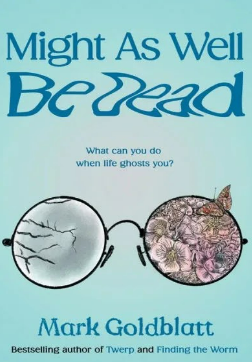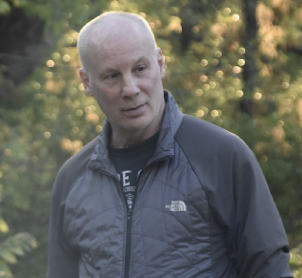guest post by Mark Goldblatt
A Story
My friend Sal once crossed paths with John Lennon. It happened in the West Village in New York City in the early 1970s. Sal, in his mid-twenties, noticed Lennon and Yoko Ono walking toward him, about a half block away. That half block gave Sal more than enough time to figure out what to say. The problem was that his mind went blank. That was John Lennon strolling up the block. An actual Beatle! On Hudson Street! Coming right at him!
Keep in mind that Sal had worked for a time as a NYC taxi driver. So he’d chatted with celebrities who climbed into the back seat of his cab. John Wayne. Raquel Welch. Frank Sinatra and Sammy Davis Jr.. Mickey Mantle. But those were merely famous people.
Not Beatles.
As hard as Sal tried to improvise something clever to say, his brain wouldn’t cooperate. It just kept coughing up two words into his consciousness: John Lennon! John Lennon! John Lennon!
Seconds later, they came together. Sal said his face was about three feet from Lennon’s when he opened his mouth, and the only word that came out was, “Thanks.”
Lennon looked him in the eye and said, “For what?” Then he nodded, smiled mischievously, and he and Yoko kept walking. So did Sal, still shaking, but also annoyed that he couldn’t come up with anything more profound or eloquent to say.
A Question
Sal told me that story the morning after Lennon died. It grieved him even more, with Lennon gone, that he’d blown the only chance he’d ever get to tell Lennon what he and his music had meant to him. He asked me what I would have said; I told him I’d think about it and get back to him…. and I did think about it, though not too hard, because I always figured an answer would come to me.
Sal died of a cerebral aneurysm while playing basketball with a nephew in the summer of 2012. He’d just turned 64, and in an email to me the day before he died, he asked if I’d still need him and feed him now that he was 64—his literal last words to me were a Beatles reference, which wrapped that memory of his encounter with Lennon in a double layer of grief.
A Seed: Starting with What if? and Ending with Ah

That’s the backstory of my latest novel, Might As Well Be Dead. For me, novel-writing is always a catharsis. The writing itself is laborious but never unpleasant. What gets me to the end is the thought that I’m setting something right.
Not every novel of mine has a happy ending—most don’t—but that’s not what I mean by “right.”
They are sense-making mechanisms, imaginative exercises that begin with what-if and end with ah.
I wanted Sal to meet John Lennon again. Not just meet him, but spend time with him, hang out. I wanted the two of them to become friends. So I knew I had the seed of a novel.
The trouble is, you need more than a seed. You need a concept. You need a plot. For years, nothing came to mind.
The Seed Grows into an Actionable Idea
Inspiration finally arrived as I was standing in a shower, listening to a shuffle of Beatles songs. The song that did it was “Julia.” The ache in Lennon’s voice as he sings about the mother who abandoned him cut right through me.
The traumatic details of Lennon’s childhood are well known, even among casual Beatles fans. Suffice it to say that Lennon wouldn’t have been Lennon—the wit, the sarcasm, the occasional cruelty—if his heart hadn’t been sandblasted when he was a boy. Here’s what occurred to me in that shower, listening to that song: What if Lennon came back as a ghost? What if he came back specifically to advise a boy abandoned by his mom in 2023? I could imagine Sal as that boy; photos from his childhood were laid out at his funeral and seared in my memory, and he always had a waiting-for-the-other-shoe-to-drop look in his eyes.
Be Open to Inspiration
So with a few tweaks in Sal’s bio to make the writing easier—I set the story in my childhood neighborhood of Queens, New York instead of in Sicily, where Sal had been born—I brought the two of them together. Which is how a spirit named Winston (Lennon’s middle name) crosses paths with a boy named David Salmon.
Throw in lots of subtle and less-than-subtle Beatles references, variations of lyrics, snippets from Lennon interviews, a guidance counselor named Mr. Ivan, a homeroom teacher named Ms. Pang, and you’ve got the makings of a funny-sad middle grade novel.
My sense, after hundreds of conversations on the topic with fellow writers, is that novel writing is roughly one third inspiration, one third improvisation, and one third intellectual grunt work—by which I mean composing rhythmic sentences, keeping characters’ motives and potentials sorted out, and staying on the right side of the enough/too much description line. The grunt work is really the only part you can control. So you have to be open to inspiration and improvisation—within you and without you. Novels are amalgams. Your experiences. Your friends’ memories. Stuff you’ve read. Stuff you’ve heard about. Your little brother’s ex-girlfriend who once spilled a wine spritzer on Barbara Streisand. The loud-talker at the next table in a diner who sat next to the My Pillow guy on a plane. YouTube footage of a fight between an umpire and an enraged mom at a children’s tee-ball game.
Be open to it all. Mash up the different elements. The real secret of the secret sauce of novel-writing is that no one knows what goes into it.
Oh, and for the record, I never did figure out anything better for Sal to have said to John Lennon on that West Village street a half century ago.
“Thanks” pretty much covers it.

MARK GOLDBLATT is the award-winning author of the middle grade novels Twerp and its sequel Finding the Worm (both from Random House), as well as a half dozen novels and nonfiction books for adults. He has been published in many popular and academic newspaper and magazines including The New York Times, Wall Street Journal, New York Post, USA Today, Time, National Review, Reason, Commentary, Quillette, New York Observer, Chronicle of Higher Education, Philosophy Now, and Sewanee Theological Review. He teaches developmental English and religious history at Fashion Institute of Technology of the State University of New York. Find out more about him at markgoldblatt.com.
Follow Mark Goldblatt on social media:
For more on shaping a story with readers in mind, check out these posts!

COMMENTs:
0